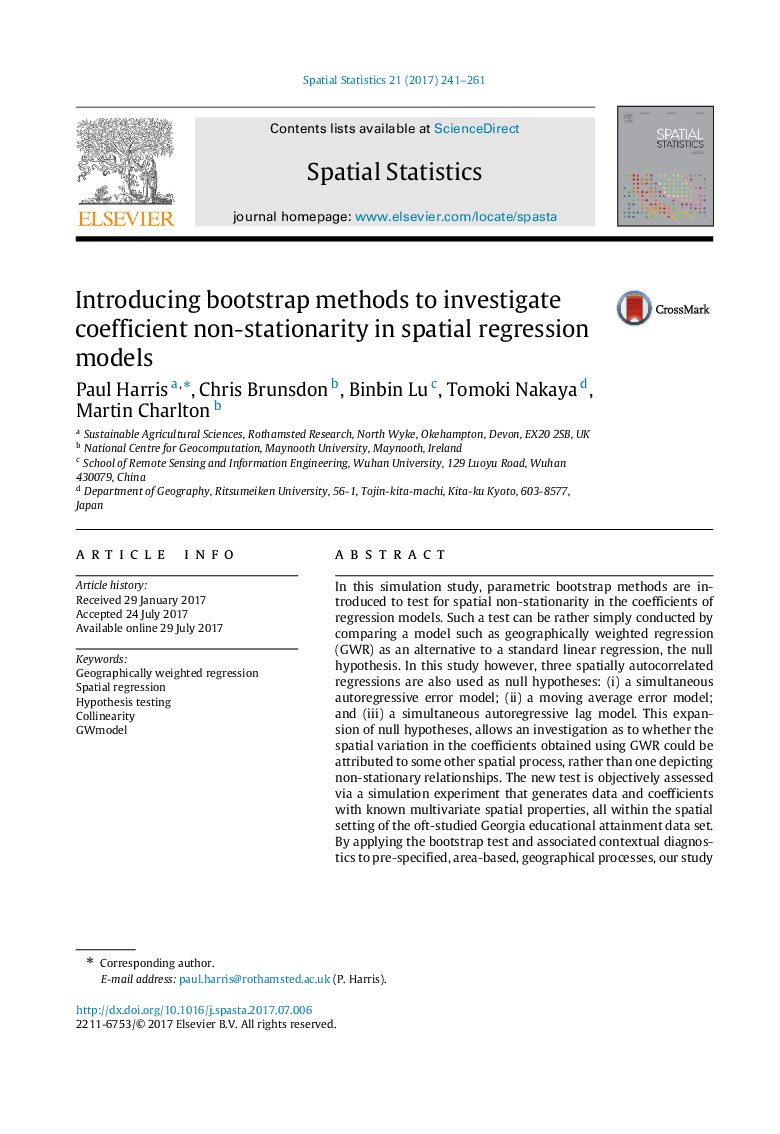| کد مقاله | کد نشریه | سال انتشار | مقاله انگلیسی | نسخه تمام متن |
|---|---|---|---|---|
| 5119001 | 1378193 | 2017 | 21 صفحه PDF | دانلود رایگان |
In this simulation study, parametric bootstrap methods are introduced to test for spatial non-stationarity in the coefficients of regression models. Such a test can be rather simply conducted by comparing a model such as geographically weighted regression (GWR) as an alternative to a standard linear regression, the null hypothesis. In this study however, three spatially autocorrelated regressions are also used as null hypotheses: (i) a simultaneous autoregressive error model; (ii) a moving average error model; and (iii) a simultaneous autoregressive lag model. This expansion of null hypotheses, allows an investigation as to whether the spatial variation in the coefficients obtained using GWR could be attributed to some other spatial process, rather than one depicting non-stationary relationships. The new test is objectively assessed via a simulation experiment that generates data and coefficients with known multivariate spatial properties, all within the spatial setting of the oft-studied Georgia educational attainment data set. By applying the bootstrap test and associated contextual diagnostics to pre-specified, area-based, geographical processes, our study provides a valuable steer to choosing a suitable regression model for a given spatial process.
Journal: Spatial Statistics - Volume 21, Part A, August 2017, Pages 241-261
